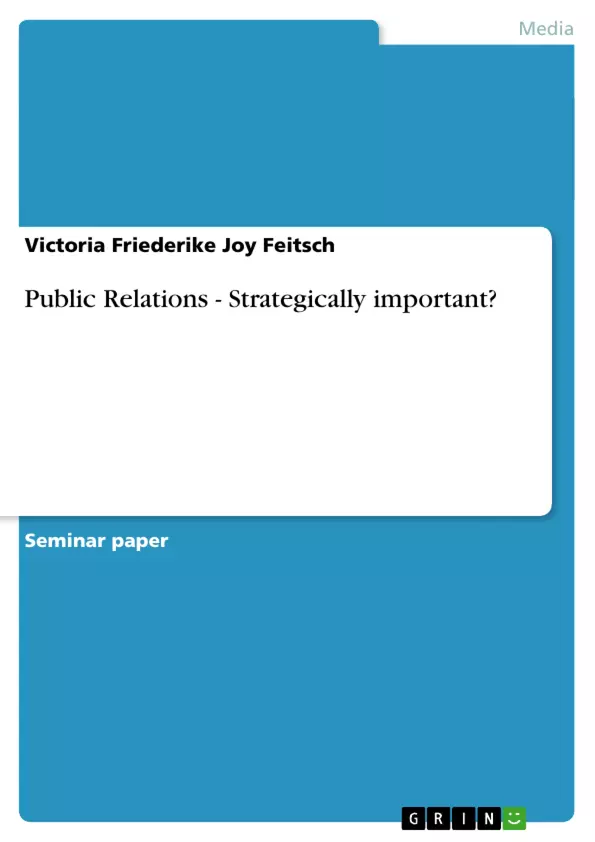“A communication concept which is systematically planned and optimised may not offer a guarantee for success, however, it minimises the risk of failure.” (Mast 2006) [...] However, the effect and importance of tactical decisions and consequential strategic alterations should not be underestimated. Such effects of tactics on an existing strategy will be analysed in the following, while changes in the field of Public Relations, its role within an organisation, aims and responsibilities and its perception in and consequences for the publics will be identified and interpreted. The strategic position and long-term efficiency of Public Relations itself will be highlighted, which will identify PR as a strategically important function for the organisation as an entirety.
Inhaltsverzeichnis (Table of Contents)
- Introduction
- Strategy
- Relationships, Strategy and Tactics
- Corporate Identity and Corporate Social Responsibility
- Issue Management
- Marketing and Public Relations
- Budget and Calculations
Zielsetzung und Themenschwerpunkte (Objectives and Key Themes)
This paper examines the extent to which Public Relations functions as a strategically important role within an organization. It analyzes the interplay between strategic planning, tactical decisions, and the long-term impact on an organization's reputation and overall success.
- The strategic importance of Public Relations within an organization.
- The relationship between strategic planning and tactical decision-making in PR.
- The role of Public Relations in building and maintaining corporate identity and social responsibility.
- The impact of Public Relations on an organization's reputation and public perception.
- The importance of effective communication and relationship management in PR.
Zusammenfassung der Kapitel (Chapter Summaries)
Introduction: The introduction emphasizes the critical role of strategic planning and systematic communication in minimizing the risk of failure in Public Relations. It highlights the importance of research, strategic thinking, and procedural continuity in building and maintaining a company's image.
Strategy: This section defines strategy as a set of planned maneuvers to achieve long-term objectives. It connects this definition to Public Relations, emphasizing the long-term nature of PR efforts and the importance of considering competitors and potential changes.
Relationships, Strategy and Tactics: This chapter explores the crucial role of relationships in Public Relations. It highlights the dependence on collaboration with other departments and the public, and the importance of building trust. The need for flexibility in adapting to changing needs while maintaining overarching strategic goals is discussed.
Corporate Identity and Corporate Social Responsibility: This section examines the significance of corporate identity and social responsibility in Public Relations. It underscores the crucial role of PR in shaping and maintaining a positive organizational image.
Schlüsselwörter (Keywords)
Public Relations, Strategic Communication, Corporate Identity, Corporate Social Responsibility, Relationship Management, Strategic Planning, Tactical Decisions, Reputation Management, Organizational Communication.
- Quote paper
- Victoria Friederike Joy Feitsch (Author), 2009, Public Relations - Strategically important?, Munich, GRIN Verlag, https://www.grin.com/document/123020



